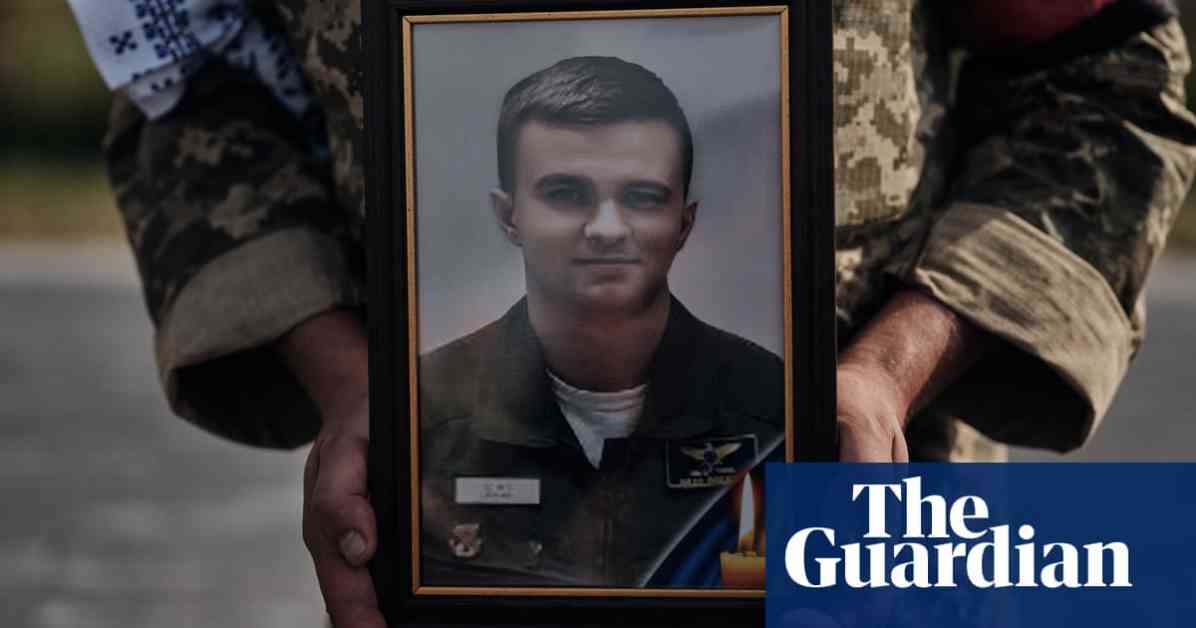Ukraine’s President, Volodymyr Zelenskiy, has taken decisive action in response to a recent tragedy involving the country’s air force. The head of Ukraine’s air force was fired following the crash of a newly delivered F-16 jet that resulted in the death of the pilot, Lt Col Oleksiy Mes. Zelenskiy expressed his gratitude to the military pilots while emphasizing the importance of protecting those who defend the country. The dismissal of Mykola Oleshchuk, the air force commander, was a significant move that raised questions about the circumstances surrounding the crash and the overall impact on Ukraine’s military operations.
Analysis of the F-16 Crash and its Impact
The fatal crash of the F-16 jet was a tragic event that highlighted the risks faced by military personnel in the line of duty. While the exact cause of the crash was not immediately clear, speculations arose regarding the possibility of friendly fire, mechanical failure, or pilot error. The incident prompted President Zelenskiy to take swift action in replacing the head of the air force, signaling a commitment to ensuring the safety and effectiveness of Ukraine’s military operations.
The arrival of the F-16 jets, donated by European nations, was intended to bolster Ukraine’s air capabilities. However, the delay in their deployment due to training requirements raised concerns about the readiness of Ukrainian pilots and ground staff to operate the advanced aircraft. The crash of the F-16 jet and the subsequent dismissal of the air force commander added to the challenges faced by Ukraine’s military as it grappled with increasing pressure from Russian forces in eastern Ukraine.
The funeral of Lt Col Oleksiy Mes served as a somber reminder of the sacrifices made by military personnel in defense of their country. The loss of a skilled pilot and the implications of the F-16 crash underscored the urgent need for effective leadership and strategic planning to address the escalating conflict in the region. As Russia continued to make advances towards key cities in eastern Ukraine, including Pokrovsk, the Ukrainian military faced mounting pressure to respond decisively to the threat posed by the aggressor.
Russian Advances and Ukrainian Response
The rapid advances made by Russian forces in eastern Ukraine raised concerns about the ability of the Ukrainian military to defend key territories and protect civilian populations. The proximity of Russian forces to the outskirts of Pokrovsk and the mass evacuation orders issued by local officials highlighted the gravity of the situation facing Ukraine. The shelling of residential areas and civilian infrastructure in cities like Kharkiv underscored the devastating impact of the conflict on innocent lives.
The strategic importance of Pokrovsk as a supply hub for Ukrainian forces added to the urgency of the situation, as the loss of the city could pave the way for further Russian incursions into the Donetsk region. The challenges faced by Ukrainian troops on the frontlines were exacerbated by the diversion of experienced brigades to the Kursk offensive, leaving critical gaps in the defense of key territories. The deteriorating frontline situation and the increased pressure from Russian forces highlighted the need for a coordinated and effective response from Ukrainian military leadership.
President Zelenskiy’s reassurances regarding the progress of Ukrainian forces in the Kursk region contrasted with reports from military analysts and frontline sources, painting a bleak picture of the ongoing conflict. The discrepancy between official statements and on-the-ground realities raised questions about the transparency and accuracy of information provided to the public. The need for truthful and reliable communication from government officials became increasingly apparent as the conflict in eastern Ukraine escalated.
Challenges and Strategies for Ukraine’s Military
The challenges faced by Ukraine’s military in responding to the Russian aggression highlighted the need for strategic planning, effective leadership, and adequate resources. The exhaustion of troops, the lack of training for newly mobilized soldiers, and the demoralization of frontline units underscored the complexities of the conflict. The implementation of strict conscription laws to replenish forces and the deployment of inexperienced troops to the frontlines raised concerns about the effectiveness of Ukraine’s military operations.
The disorganization and disarray within the Ukrainian armed forces further complicated efforts to defend key territories and repel Russian advances. The lack of coordination, training, and morale among frontline units posed significant obstacles to achieving success in the conflict. The critical assessment of the situation by military officers and analysts highlighted the urgent need for reforms and improvements in the military’s capabilities to address the evolving threats posed by the enemy.
The role of leadership in guiding Ukraine’s military through the challenges of the conflict was crucial in determining the outcome of the ongoing hostilities. President Zelenskiy’s decisions regarding the dismissal of the air force commander and the strategic direction of military operations reflected the gravity of the situation facing the country. The need for strong and decisive leadership to navigate the complexities of the conflict and protect Ukrainian sovereignty became increasingly apparent as the conflict intensified.
Conclusion
The firing of the head of Ukraine’s air force following the fatal F-16 crash underscored the challenges faced by the country’s military in responding to the escalating conflict with Russia. The impact of the incident on Ukraine’s defense capabilities and the morale of frontline troops raised concerns about the effectiveness of military operations. President Zelenskiy’s actions in addressing the aftermath of the crash and the broader implications for Ukraine’s security highlighted the importance of strong leadership and strategic planning in times of crisis. As the conflict in eastern Ukraine continued to unfold, the need for unity, resilience, and determination among the Ukrainian people and their leaders became increasingly evident in the face of adversity.












